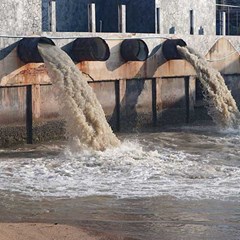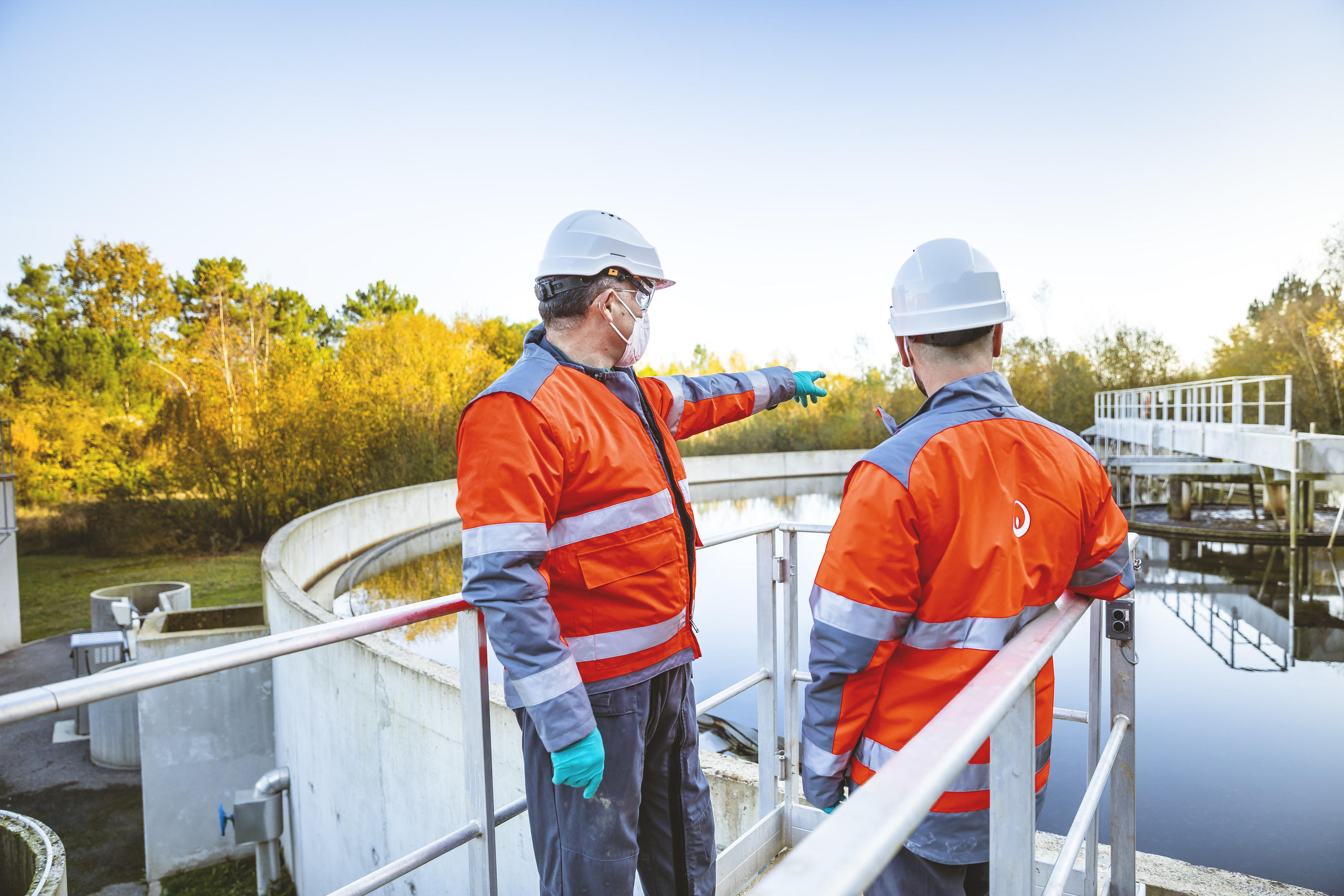Industrial Waste Water Treatment-- Comprehensive Systems for Wastewater Disposal
Industrial Waste Water Treatment-- Comprehensive Systems for Wastewater Disposal
Blog Article
Secret Methods in Hazardous Waste Water Treatment Processes
The treatment of industrial wastewater is a crucial aspect of ecological administration, involving an array of strategies developed to reduce the impact of pollutants. Improvements in innovations such as membrane filtration and advanced oxidation processes use cutting-edge options for boosting treatment effectiveness.
Physical Therapy Methods
Just how properly can physical therapy techniques attend to the intricacies of commercial wastewater? Physical treatment approaches play a crucial function in the preliminary stages of wastewater monitoring, focusing primarily on the removal of solids and large particulates. Strategies such as sedimentation, flotation, and filtering are important for reducing the focus of put on hold solids, consequently enhancing the efficiency of subsequent treatment processes.
Sedimentation entails the gravitational settling of solids, permitting the splitting up of much heavier products from the wastewater. This method is particularly effective in clarifying water before biological or chemical treatments. Filtering, on the various other hand, utilizes various media to capture particle issue, making certain that smaller sized contaminants are gotten rid of. This strategy can be tailored to accommodate different types of industrial effluents, producing clearer effluent streams.
Additionally, flotation methods, which utilize air bubbles to raise put on hold solids to the surface area for elimination, work in dealing with wastewater with high focus of fats, oils, and greases. On the whole, physical therapy techniques act as a vital first action in the comprehensive management of commercial wastewater, guaranteeing that the load on succeeding treatment stages is minimized and enhancing general treatment efficacy.
Chemical Treatment Strategies
While physical treatment approaches lay the foundation for effective wastewater management, chemical therapy strategies are necessary for dealing with the extra complicated impurities frequently found in industrial effluents. These approaches use different chemical agents to precipitate, reduce the effects of, or oxidize unsafe compounds, guaranteeing a much more detailed removal of contaminants.
One common technique is coagulation and flocculation, where chemical coagulants such as light weight aluminum sulfate or ferric chloride are included in promote the gathering of suspended fragments. This procedure boosts solid-liquid splitting up, minimizing turbidity and improving water top quality. Additionally, neutralization procedures are utilized to adjust the pH of wastewater, utilizing acids or bases to counteract acidic or alkaline streams, specifically.
Oxidation-reduction responses play an essential duty in derogatory natural pollutants and pathogens. Chemical oxidants like hydrogen, chlorine, or ozone peroxide are made use of to damage down complex organic substances, making them less damaging or much more biodegradable. In addition, progressed oxidation procedures (AOPs) incorporate numerous oxidation methods to improve toxin elimination performance.
Organic Treatment Processes
The effectiveness of wastewater treatment is considerably improved by organic treatment processes, which harness the natural metabolic activities of microorganisms to break down organic issue and get rid of pollutants. Industrial Waste Water Treatment. These procedures mostly include anaerobic and cardio food digestion, each tailored for details sorts of wastewater
Cardio treatment procedures utilize oxygen to sustain microbial development, advertising the failure of organic contaminants into carbon dioxide and water. Typical methods include activated sludge systems, where oygenation containers promote the mixing of wastewater with microorganisms, and flowing filters, which urge biofilm advancement on media surface areas.
On the other hand, anaerobic therapy processes happen in the lack of oxygen, using anaerobic germs to decompose raw material, resulting in biogas manufacturing, a renewable resource resource. Anaerobic digesters are frequently used in commercial settings for this purpose, successfully decreasing the volume of sludge while creating important biogas.
The selection of an organic therapy approach depends upon wastewater attributes, therapy objectives, and governing criteria. The integration of biological procedures in wastewater treatment not only improves contaminant elimination effectiveness but additionally advertises sustainability by decreasing chemical use and supporting resource healing.
Advanced Oxidation Processes

Typical AOP techniques consist of Fenton's photocatalysis, ozonation, and reagent. Fenton's reagent, a combination of hydrogen peroxide and ferrous iron, militarizes the development of hydroxyl radicals, making it reliable for treating wastewater containing phenolic compounds and other stubborn substances. Ozonation makes use of ozone as a powerful oxidant, with the ability of degrading a wide variety of organic toxins while concurrently disinfecting the effluent. Photocatalysis employs light-activated catalysts, such as titanium dioxide, to boost oxidation responses and eliminate pollutants.
AOPs supply a number of benefits, including reduced sludge production and the capability to treat wastewater with high concentrations of natural toxins. Nevertheless, the application of AOPs calls for mindful factor to consider of operational specifications and cost-effectiveness, guaranteeing that these innovative methods are appropriately incorporated right into existing wastewater treatment systems.
Membrane Filtering Technologies

Microfiltration is effective for eliminating suspended bacteria and solids, while ultrafiltration targets smaller sized natural molecules and viruses. Nanofiltration connects the void in between ultrafiltration and turn around osmosis, successfully removing natural compounds and divalent ions. Reverse osmosis supplies the greatest level of purification, used primarily for desalination and removing mono-valent ions.
Membrane modern technologies use many benefits, consisting of reduced power intake compared to traditional treatment approaches, modular style for scalability, and the potential for water recuperation and reuse. Obstacles such as membrane layer fouling and the discover here need for routine maintenance need to be addressed to make certain system efficacy. In general, membrane filtration innovations represent an important part of modern commercial wastewater therapy my link methods, advertising sustainability and source preservation in water administration.
Verdict
In final thought, industrial wastewater treatment uses a varied array of methods, consisting of physical, chemical, biological, and progressed techniques. Proceeded improvements in these methods will certainly further improve the effectiveness and effectiveness of wastewater therapy processes in commercial setups.
The treatment of commercial wastewater is a vital element of environmental monitoring, involving a variety of methods made to reduce the effect of impurities.Just how successfully can physical therapy techniques deal with the intricacies of commercial wastewater?Advanced oxidation processes (AOPs) stand for an advanced technique in industrial wastewater therapy, developed to effectively degrade natural toxins that Read Full Report are often immune to conventional therapy methods (Industrial Waste Water Treatment).In final thought, commercial wastewater treatment uses a varied range of methods, consisting of physical, chemical, biological, and progressed techniques. Continued developments in these methods will certainly better enhance the performance and efficiency of wastewater treatment processes in industrial setups
Report this page